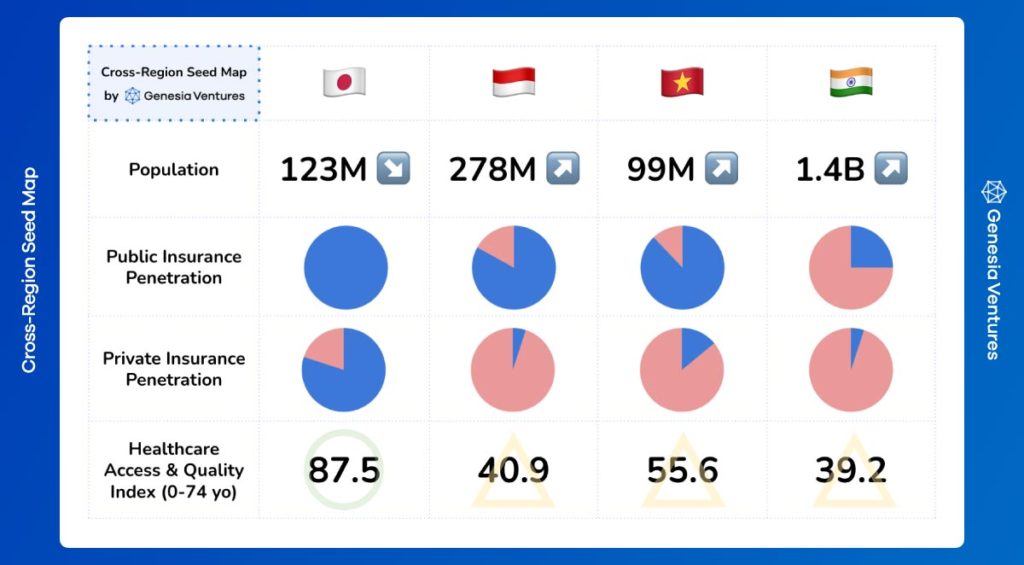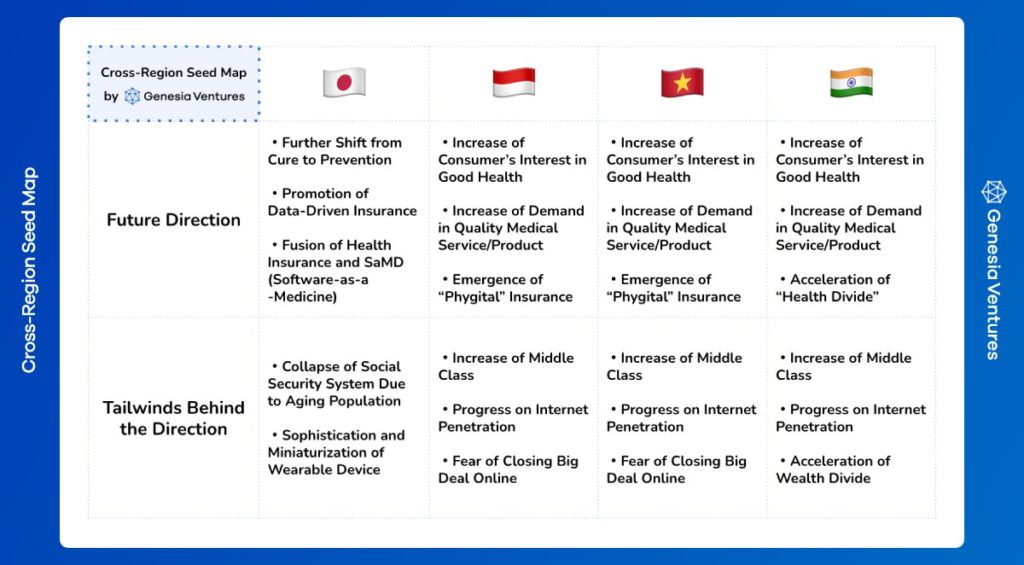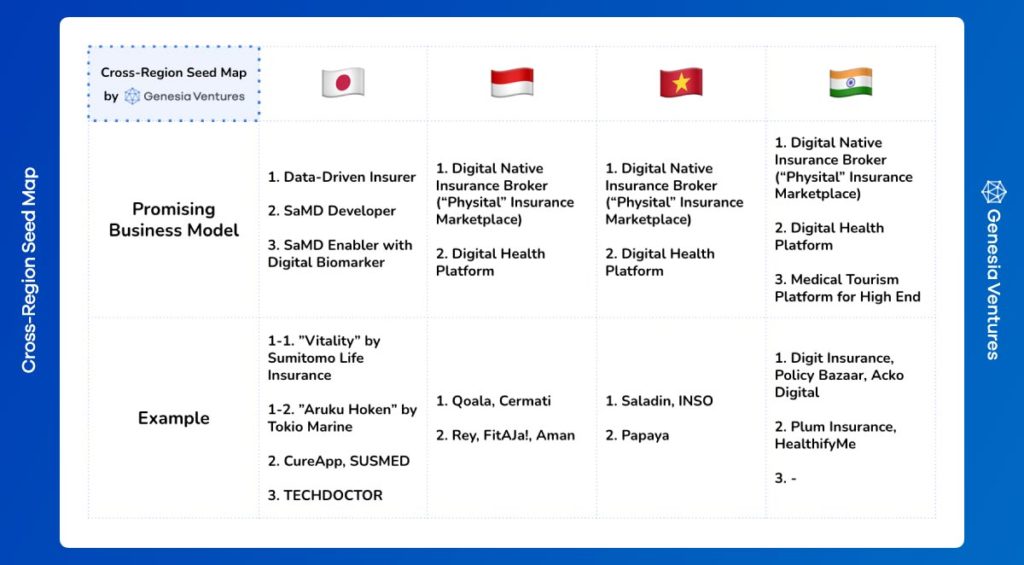
Cross-Region Seed Map #α Cost of Living in Tier-1 City
Why “Cross-Region Seed Map”
We just started recently the blog activity named Cross-Region Seed Map, reflecting on or sharpening our own advantages which we have multiple local operations across the four different countries in Asia. We in the startup ecosystem are prone to look at the state-of-the-art market like the United States where the ever-popular Silicon Valley was born, but in reality there is nothing similar between the market like US and our home countries. All the more so if you are a home-grown entrepreneur in emerging markets such as India and the countries in Southeast Asia, isn’t it?
In Asia, where we live and consider the highest growing region in the entire globe, there should be unique business trends and growth stories specific to the region. What commonalities can be identified between markets like the US and our own, and what cannot be? What are the unique factors that contribute to success or failure in our markets, and what criteria should startups meet to achieve growth here? Someone ought to tap into these questions but no one appears to be tackling them. This is why we initiated this blog project, presenting our distinctive viewpoints.
How it Works
As the very first step, I just wrote down my thoughts on the specific business area of Health Insurance with the four country’s comparison table and publish it last month. As you can see in the article, the core of the project is nothing but the comparison table. Refer to the image below; the table can divided into three parts. The first section provides a ‘static snapshot’ of each country, showing the current status and major challenges of the sector, with numbers derived from macro perspectives.

The second section below describes a sort of ‘dynamic factors’ that drive each counties towards the specific direction.

In the final, third section below, you will find insights into potential business ideas suitable for each region, along with examples that include the names of existing startups and enterprises in each market.

Comparison of Cost of Living in Tier-1 City
Now you should have an overview of why we initiated the Cross-Region Seed Map and what it entails. Usually, we publish articles based on the format above, but starting with this article, we might be able to take you through more relatable information from the perspectives of local citizens in several upcoming pieces.
So, in this article (which we might consider as ‘α’ of the series, rather than just a number in sequence), we would like to delve deeper into the cost of living for tier 1 cities in the four countries where we have local investment bases: Japan, Indonesia, Vietnam, and India. We aim to explore what expenses are involved and how much it costs to live in these cities each month, as we are actually living in these cities. Quality insights always come from tangible information at the micro level, don’t they?

In the table above, you can gain a perspective on the cost of living in each tier-1 city where we at Genesia Ventures are actually based. I would like to ask you to note that the cost of living here is based on the assumption of living in the city centre. You can imagine areas like Minato-ku in Tokyo, Sudirman in Jakarta, District 1 in Ho Chi Minh City, and Indiranagar in Bengaluru. The following are links to the data sources for each item being compared.
When it comes to the currency exchange rate, we calculate it based on the numbers below as of May 22nd, 2024.
- 1 USD = 155.745 JPY
- 1 USD = 15,980.65 IDR
- 1 USD = 23,465 VND
- 1 USD = 82.99 INR
Cost of Staff Reflects Price of Service
Looking at the numbers over the four cities, you should get awareness of the similarity between Jakarta and Ho Chi Minh City. While there seem to be slight differences, these two different cities look like twins. I know next to nothing about the reason why Starbucks coffee in Jakarta is more expensive than that in Ho Chi Minh City, but I just want to mention that Indonesia is well-known for its coffee brands (I love Sumatra Mandheling, actually).
On top of that, what catches my eye is the high price of taxi fares and McDonald’s meals in Tokyo. I guess the reason can be attributed to the relatively higher wages of service staff compared to other countries. You can’t escape labor costs when looking at any service price. While the situation is gradually changing due to the new market entry of ride-sharing, taxi drivers’ wages remain high, strictly protected by labor unions. Additionally, if you take a look at part-time jobs at places like McDonald’s, there are minimum wage regulations in place (minimum hourly wage in Tokyo is $6.85 as of today), compounded by a labor shortage in Japan. Tokyo is no exception to the rapidly aging society.
By the way, isn’t it surprising that a Starbucks coffee in Tokyo is the second most affordable among these four Asian cities? Times have certainly changed.
Supply at Scale Helps You Enjoy Affordable Prices
In the Bengaluru section, you might be impressed by the prices of two items: a liter of milk and a UNIQLO T-shirt. Regarding the milk price, you can easily imagine it’s underpinned by the large number of dairy cows in the country. Living in Bengaluru, I see dairy cows on the road every single day without exaggeration. As for the T-shirt price of UNIQLO, a Japanese casual clothing giant, I can say a few things. First, I borrowed the price of $11.93 from a store located in another tier-1 city, Mumbai, as there is no UNIQLO store in Bengaluru (kindly expand soon, please). Second, you might assume that UNIQLO has implemented a branding strategy in India, different from how we perceive them as just a casual brand with high cost performance in Japan. Given the price-sensitive nature of Indian consumers, there is no end to lowering prices. Something other than just affordable prices would have been needed for market entry as a foreign brand. Let’s see how it will work. We’ll find out the answer when they expand into Bengaluru.
That’s all for this time. As an introduction to the in-depth articles on specific business sectors, I plan to keep writing this kind of relatable, grounded article as part of a series for the time being, so stay tuned. See you again soon!


